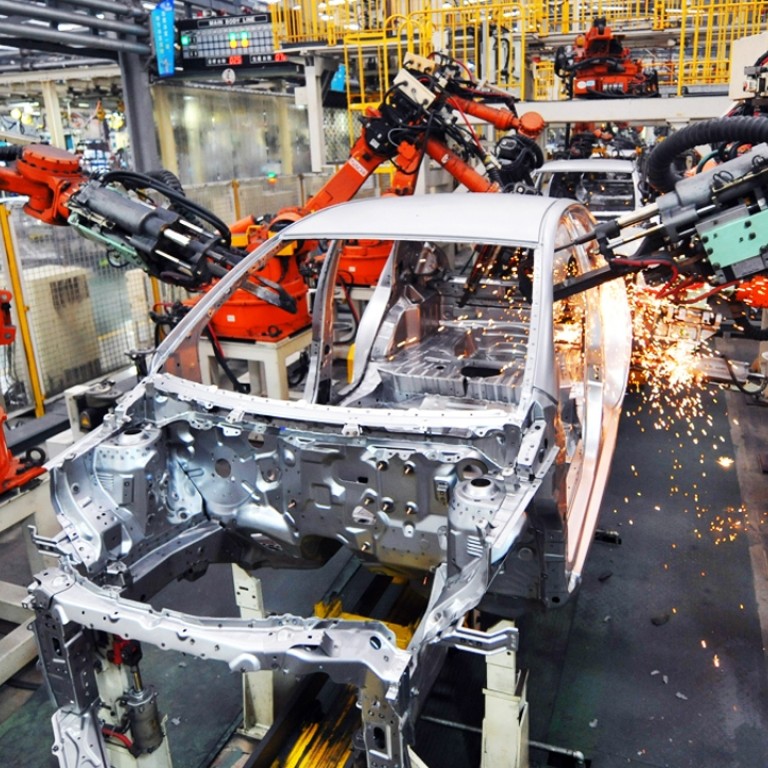
Baby steps for robot makers: China won’t play key role in next-generation industrial bots as tech gap with foreign firms widens, experts say
China has scant chance of leading the development of next-generation industrial robots as the gap in technological innovation between Chinese makers and their overseas peers is widening, according to industry experts.
China has been the world’s biggest market for industrial robots since 2013, but none of the 500 or so domestic manufacturers has any distinct competitive advantage when it comes to their core technology, Chinanews.com reported Luo Jun as saying.
WATCH: See how an industrial robot is made
Luo is CEO of the International Robotics and Intelligent Equipment Industry Alliance, a government think tank that serves the robotics industry.
Luo said most robot makers and local governments in China have proven to be short-sighted by focusing on investing in existing technology, or simply by setting up industrial parks to attract foreign manufacturers.
READ MORE: ‘The manufacturing boom in Guangdong is over’: Industrial robot makers the latest to get swallowed up by China’s economic slowdown
Few if any have moved to develop original core research to position themselves at the forefront of the next generation of robots, he added.

“A large number of robot-making enterprises and robotic parks are now being built,” Luo was quoted as saying.
“But within three to five years, we will find their technology has become outdated and it will need another round of upgrading and transition.”
READ MORE: US$154 billion rise of the robots planned for Pearl River Delta manufacturing
“We lack original research but we always start to catch up and copy advanced technology after it debuts overseas. That’s why we’re [so quiet] when new technology emerges.” he said.
Many domestic makers of robots still focus on investing in and developing traditional “core component,” he said, giving as examples servomotors, which precisely control angular positions and velocity, and also speed reducers.

But these are expected to become outdated and replaced by newer tech for next-generation robots, he added.
China saw its robot-making industry gain traction after the global financial crunch in 2008, which forced more domestic manufacturers to seek cost-cutting measures.
We lack original research but we always start to catch up and copy advanced technology after it debuts overseas. That’s why we’re [so quiet] when new technology emerges
It hit investment in the industry peak this year as the authorities look to robotics to overcome labour shortages and spur innovation to counter the ongoing economic slowdown.
READ MORE: Think a robot can write this? Pah…China’s state news agency begins publishing work of ‘robotic journalist’
Municipal and provincial governments across the country are now competing for a piece of the pie.
Authorities in Guangdong said early this year they would spend 943 billion yuan (US$152.07 billion) on replacing human labour with robots by 2018.
Meanwhile, over in east China, Zhejiang province said it would invest 800 billion yuan to push its 36,000 industrial enterprises to replace human labour with robots within the next five years.

